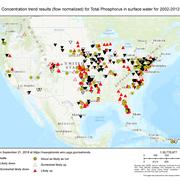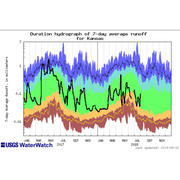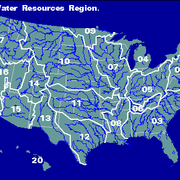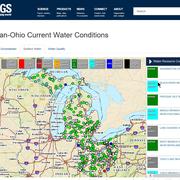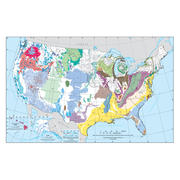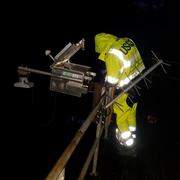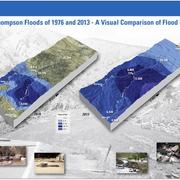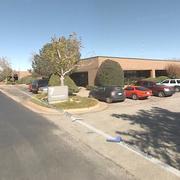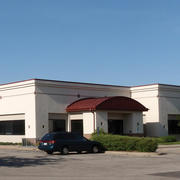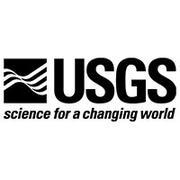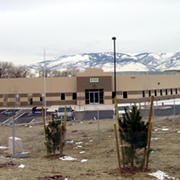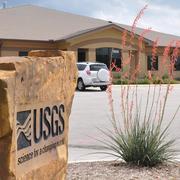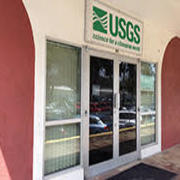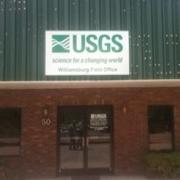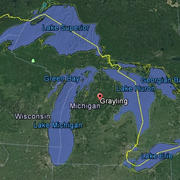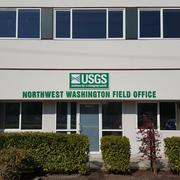Mission Areas
Water Resources
Mission Areas L2 Landing Page Tabs
Water information is fundamental to national and local economic well-being, protection of life and property, and effective management of the Nation’s water resources. The USGS works with partners to monitor, assess, conduct targeted research, and deliver information on a wide range of water resources and conditions including streamflow, groundwater, water quality, and wateruse and availability.
Water is one of seven science mission areas of the U.S. Geological Survey (USGS). Water's mission is to collect and disseminate reliable, impartial, and timely information that is needed to understand the Nation's water resources.
Read Science PlanScience Programs and Partnerships
The USGS partners with local, state, and other federal agencies through cooperative agreements for a variety of reasons. The USGS and partners jointly plan the scientific work conducted under cooperative agreements resulting in science that has broad relevance to address current water issues. Partners choose...
USGS Mine Drainage Activities
The USGS Mine Drainage Activities website promoted communication, cooperation, and collaboration among interdisciplinary USGS scientists working on problems related to mining and the environment. It contains catalogs of past mining-related rpojects, activities, and publications.
Assessment of the immune status of wild and laboratory-maintained smallmouth bass
Deaths of young-of-year smallmouth bass in the Chesapeake Bay drainage has been noted since 2005. Studies of affected fish have found bacterial, viral and parasitic infections. Mixed infections suggest these fish are immunosuppressed. Understanding the role of specific pathogens and environmental factors that contribute to their presence is important but equally important is the understanding...
Trace Metals in San Francisco Bay Clams
The clams Potamocorbula amurensis and Corbicula fluminea were collected at a variety of sites in the San Francisco Bay/ Delta beginning July 1990 and ending February 2010. These invasive species were used as biosentinels of the fate, transport, and effects of trace metals in the San Francisco Bay ecosystem.
Linking Selenium Sources to Ecosystems: Mining
Environmental sources of selenium (Se) such as from organic-enriched sedimentary deposits are geologic in nature and thus can occur on regional scales. A constructed map of the global distribution of Se source rocks informs potential areas of reconnaissance for modeling of Se risk including the phosphate deposits of southeastern Idaho and the coals of Appalachia.
Linking Selenium Sources to Ecosystems: Refining
The San Francisco Bay-Delta receives selenium (Se) internally from oil refineries and externally through riverine agricultural discharges. Predator species considered at risk from Se consume the estuary’s dominant bivalve, C. amurensis, an efficient bioaccumulator of Se. Modeling predicts site-specific ecological risk and derives a range of protective Se concentrations for use by decision-...
Linking Selenium Sources to Ecosystems: Irrigation
Adverse effects of selenium (Se) on fish and waterfowl in wetlands receiving agricultural drainage occurred in the 1980s in the San Joaquin Valley of California. The identified mechanisms of Se enrichment helped resolve Se toxicity problems associated with irrigated agriculture in the arid West. Bioaccumulation of Se in ancient marine sediments is postulated as a primary pathway in source...
Linking Selenium Sources to Ecosystems: Modeling
Selenium (Se) as a contaminant of ecosystems is bioaccumulative and causes reproductive effects in fish and wildlife. Ecosystem-scale Se modeling predicts Se bioaccumulation based on dietary biodynamics within site-specific food webs. The model can be used to forecast Se toxicity under different management or regulatory proposals or to translate a tissue guideline to a dissolved guideline. ...
Linking Selenium Sources to Ecosystems: Local and Global Perspectives
The sources, biogeochemistry, and ecotoxicology of selenium (Se) combine to produce a widespread potential for ecological risk such as deformities in birds and fish. Linking the understanding of source characteristics to a mechanistic, biodynamic dietary model of Se exposure on an ecosystem-scale improves the prediction of Se effects and its potential remediation.
The Story of the USGS Research Vessel (R/V) Polaris
For the past 50 years, the USGS has been conducting research in the San Francisco Bay and Delta, California and beyond. This research would not have been possible without the Research Vessel (R/V) Polaris. Many scientists who have been fortunate to work on the Polaris have come and gone, but the Polaris sailed from the South San Francisco Bay continuously from 1968...
Quality Systems Branch (QSB)
The USGS Quality Systems Branch (QSB) represents the Water Mission Area’s commitment to generating environmental data of known quality. QSB produces water and sediment performance-assessment samples and data to provide the USGS laboratory users, USGS laboratories, and field personnel with quantitative performance information to assess data quality.
USGS / National Park Service Water-Quality Partnership
Since 1998, the USGS-National Park Service Water-Quality Partnership has supported 217 projects to protect and improve water quality in 119 national parks. These USGS-NPS collaborative projects support science-based resource management by the National Park Service to address critical water-quality issues for many of our Nation's most highly valued aquatic systems.
The USGS collects, analyzes, and distributes data on a wide variety of water-related issues and resources. Much of our data is publicly available through the National Water Information System (NWIS), but additional datasets and analytical tools are also available.
Access NWISWebGroundwater Quality: Decadal Change
Almost one-half of the U.S. population rely on groundwater for their water supply, and demand for groundwater for public supply, irrigation, and agriculture continues to increase. This mapper shows how concentrations of pesticides, nutrients, metals, and organic contaminants in groundwater are changing during decadal periods across the Nation.
Changes in imperviousness for U.S. urban areas, 1974-2012
This product consists of two sets of imperviousness calculations for 3,535 urban areas and urban clusters in the conterminous United States. Imperviousness is given as the percent of the area covered by impervious surfaces, such as roads, buildings, or parking lots.
Increasing chloride in rivers of the conterminous U.S. and linkages to potential corrosivity and lead action level exceedances in drinking water
Abstract
Corrosion in water-distribution systems is a costly problem and controlling...
U.S. Geological Survey GAGES-II time series data from consistent sources of land use, water use, agriculture, timber activities, dam removals, and other historical anthropogenic influences
This product is a series of ten datasets containing tabular data from historical time series sources for the 9,067 conterminous United States sites in the U.S. Geological Survey (USGS) Geospatial Attributes of Gages for Evaluating Streamflow II (GAGES-II) dataset.
Watershed Regressions for Pesticides (WARP)
The National Water-Quality Assessment (NAWQA) project developed a series of statistical models, based on monitoring data and watershed characteristics, to enable estimation of pesticide concentrations for streams that have not been monitored.
Water Budgets Across the United States
In this data visualization, you can see how three major components of the water budget vary across the conterminous US. Precipitation is incoming rain and snow; evapotranspiration is outgoing evaporation from soil and water bodies and transpiration through plants; and runoff is excess water that makes its way to lakes and rivers through streams and spring discharges.
Estimated Annual Agricultural Pesticide Use
For all States except California, proprietary farm survey pesticide-use data are aggregated and reported at the multi-county Crop Reporting District (CRD) level. Harvested-crop acreage data by county from the U.S. Department of Agriculture Census of Agriculture are used to calculate the median pesticide-by- crop use rates for each crop in each CRD.
Ancillary Data Related to Nutrients in the Chesapeake Bay—Data Supporting Structural Equation Modeling of Nutrient Loads
This data release provides ancillary data that describe potential nutrient sources and processes for total nitrogen (TN) and total phosphorus (TP) annual loads for 84 water-quality sites within the Chesapeake Bay.
Water-Quality Changes in the Nation's Streams and Rivers
This mapper provides results from the largest-ever assessment of water quality changes in the Nation's streams and rivers. More than 185 million water-quality records from over 600 Federal, State, Tribal, and local organizations were screened as part of this assessment.
First-of-its-kind Interactive Map Brings Together 40 Years of Water-Quality Data
This mapper provides results from the largest-ever assessment of water-quality changes in the Nation's streams and rivers. More than 185 million water-quality records from over 600 Federal, State, Tribal, and local organizations were screened as part of this assessment.
USGS Water Web Services
This site serves USGS water data (streamflow, groundwater, water quality, site information, and statistics) via automated means using web services and extensible markup language (XML), as well as other popular media types. Services are invoked with the REST protocol. These services designed for high fault tolerance and very high availability.
WaterWatch Toolkit
The USGS WaterWatch Toolkit provides online tools that allow users to search USGS sites in various ways; create a variety of maps, graphs, charts, animations, and tables; perform a variety of streamflow analyses, and retrieve summary statistics.
Downloadable spatial data files for exploration and analysis.
Regional Hydrologic Unit Map
Boundary Descriptions and Names of Regions, Subregions, Accounting Units and Cataloging Units
Louisiana Fact Sheets by Parish
Louisiana Fact Sheets by Parish
Tualatin River Basin Beaver Study Area
Map of intensive sites and rapid sites where data was collected for the Tualatin River Basin Beaver Study.
WaterWatch Flood Map
Current stream conditions and NWS forecast stream conditions.
Texas Water Dashboard
The Texas Water Dashboard presents USGS real-time stream, lake and reservoir, precipitation and groundwater data for more than 850 USGS real-time observation stations in Texas.
Ascension Parish
Ascension Parish
Long Island Water Districts
Long Island Water District Areas
Michigan-Ohio Current Water Conditions
The clickable sites, Water Resources Conditions List, and Data Table at the bottom of the map are all connected. Interacting with any of them will activate pop-ups and display the site in both the Map, List and Table.
Virginia Real-Time Precipitation Network
This interactive map shows current and cumulative rainfall total for precipitation sites in Virginia. Map provides real-time precipitation radar image to overlay from National Weather Service.
Assessing Endocrine Disrupting Chemicals Risk In U.S. National Parks
Endocrine disrupting chemicals (EDC) threaten the reproductive success and long-term survival of sensitive aquatic populations in the U.S. National Park Service (NPS). The project employs a standardized EDC risk assessment framework to link new and ongoing research efforts in individual Parks and in Park Monitoring Networks, in order to provide a service-wide assessment of EDC risk in the NPS.
Maps and GIS Data
Explore water resources maps and GIS data.
Effects of ferric sulfate and polyaluminum chloride coagulation enhanced treatment wetlands on Typha growth, soil and water chemistry
Land surface subsidence is a concern in many deltas worldwide as it contributes to water quality degradation, loss of fertile land and increased potential for levee failure. As a possible solution to these concerns, on-site coagulation enhanced treatment wetlands(CETWs), coagulation water treatment followed by wetland...
Ling Liang, Yan; Kraus, Tamara E. C.; Silva, Lucas C. R.; Bachand, Philip A. M.; Bachand, Sandra M.; Doane, Timothy A.; Horwath, William R.Estimating Metal Concentrations with Regression Analysis and Water-Quality Surrogates at Nine Sites on the Animas and San Juan Rivers, Colorado, New Mexico, and Utah
The purpose of this report is to evaluate the use of site-specific regression models to estimate metal concentrations at nine U.S. Geological Survey streamflow-gaging stations on the Animas and San Juan Rivers in Colorado, New Mexico, and Utah. Downstream users could use these regression models to determine if metal concentrations are elevated and...
Mast, M. AlisaLand subsidence along the California Aqueduct in west-central San Joaquin Valley, California, 2003–10
Extensive groundwater withdrawal from the unconsolidated deposits in the San Joaquin Valley caused widespread aquifer-system compaction and resultant land subsidence from 1926 to 1970—locally exceeding 8.5 meters. The importation of surface water beginning in the early 1950s through the Delta-Mendota Canal and in the early 1970s through the...
Sneed, Michelle; Brandt, Justin T.; Solt, MichaelGroundwater-storage change and land-surface elevation change in Tucson Basin and Avra Valley, south-central Arizona—2003–2016
The U.S. Geological Survey monitors groundwater-storage change and land-surface elevation change caused by groundwater withdrawal in Tucson Basin and Avra Valley—the two most populated alluvial basins within the Tucson Active Management Area. The Tucson Active Management Area is one of five active management areas in Arizona established by the...
Carruth, Robert L.; Kahler, Libby M.; Conway, Brian D.Simulation of groundwater flow and analysis of projected water use for the Rush Springs aquifer, western Oklahoma
The U.S. Geological Survey, in cooperation with the Bureau of Reclamation and the Oklahoma Water Resources Board, (1) quantified the groundwater resources of the Rush Springs aquifer in western Oklahoma by developing a numerical groundwater-flow model, (2) evaluated the effects of estimated equal-proportionate-share (EPS) pumping rates on aquifer...
Ellis, JohnModeling hydrodynamics, water temperature, and water quality in Klamath Straits Drain, Oregon and California, 2012–15
Executive SummaryLocated southwest of Klamath Falls, Oregon, Klamath Straits Drain is a 10.1-mile-long canal that conveys water uphill and northward through the use of pumps before discharging to the Klamath River. Klamath Straits Drain traverses an area that historically encompassed Lower Klamath Lake. Currently, the Drain receives water from...
Sullivan, Annett B.; Rounds, Stewart A.Groundwater chemistry and water-level elevations in bedrock aquifers of the Piceance and Yellow Creek watersheds, Rio Blanco County, Colorado, 2013–16
The Piceance and Yellow Creek watersheds in Rio Blanco County, Colorado, are known to contain important energy resources (oil shale and natural gas) and mineral resources (nahcolite). The primary sources of fresh groundwater in the Piceance and Yellow Creek watersheds are bedrock aquifers in the Uinta and Green River Formations. The aquifers are...
Thomas, Judith C.; McMahon, Peter B.Water temperature in tributaries, off-channel features, and main channel of the lower Willamette River, northwestern Oregon, summers 2016 and 2017
The U.S. Geological Survey collected continuous water-temperature data in select tributaries of the lowermost 80 kilometers (50 miles) of the Willamette River in northwestern Oregon, during summers 2016 and 2017. Point measurements of water temperature and water quality (dissolved oxygen, specific conductance, and pH) also were collected at...
Mangano, Joseph F.; Piatt, David R.; Jones, Krista L.; Rounds, Stewart A.Relating cyanobacteria and physicochemical water-quality properties in Willow Creek Lake, Nebraska, 2012–14
Cyanobacteria (also referred to as blue-green algae) are naturally present members of phytoplankton assemblages that may detract from beneficial uses of water because some strains produce cyanotoxins that pose health hazards to people and animals. Cyanobacteria populations observed in Willow Creek Lake during 2012 through 2014 were compared to...
Rus, David L.; Hall, Brent M.; Thomas, Steven A.Filtering of periodic infiltration in a layered vadose zone: 2. Applications and a freeware screening tool
We have developed a screening tool to visualize and conceptualize the filtering properties of a layered vadose zone. Climate projections indicate that rainfall timing and magnitude may change and impact groundwater resources. This increases the importance of understanding how the vadose zone filters infiltration variability and ultimately affects...
Dickinson, Jesse E.; Ferre, T.P.AMonitoring framework for evaluating hydrogeomorphic and vegetation responses to environmental flows in the Middle Fork Willamette, McKenzie, and Santiam River Basins, Oregon
This report summarizes a framework for monitoring hydrogeomorphic and vegetation responses to environmental flows in support of the Willamette Sustainable Rivers Program (SRP). The SRP is a partnership between The Nature Conservancy (TNC) and U.S. Army Corps of Engineers (USACE) to provide ecologically sustainable flows downstream of dams while...
Wallick, J. Rose; Bach, Leslie B.; Keith, Mackenzie K.; Olson, Melissa; Mangano, Joseph F.; Jones, Krista L.Deep aquifer recharge in the Columbia River Basalt Group, upper Umatilla River Basin, northeastern Oregon
Groundwater is an important component of the water resources of the upper Umatilla River Basin of northeastern Oregon. As such, understanding the capacity of the resource is vital. Past studies have estimated recharge in the study area. One recent study of the upper Umatilla River Basin indicated that about 80 percent of recharge entering the...
Pischel, Esther M.; Johnson, Henry M.; Gingerich, Stephen B.Software and related material (data and documentation) are made available by the USGS to be used in the public interest and the advancement of science.
SWToolbox Software Information
USGS and the U.S. Environmental Protection Agency (EPA) have combined their SWSTAT and DFLOW software programs into a new tool for the low-flow anlaysis, the SWToolbox.
iRIC river flow and riverbed variation analysis
iRIC (International River Interface Cooperative) is a river flow and riverbed variation analysis software package which combines the functionality of MD_SWMS (Multi-Dimensional Surface-Water Modeling System), developed by the USGS, and RIC-Nays, developed by the Foundation of Hokkaido River Disaster Prevention Research Center.
VS2DRTI Version 1.4
VS2DRTI is a graphical software package for simulating water flow, heat transport, and reactive solute transport in variably saturated porous media.
VS2DI Version 1.3
VS2DI is a graphical software package for simulating fluid flow and solute or energy transport in variably saturated porous media.
PHAST - A Computer Program for Simulating Groundwater Flow, Solute Transport, and Multicomponent Geochemical Reactions
PHAST Is a computer program for simulating groundwater flow, solute transport, and multicomponent geochemical reactions.
Water, Energy, and Biogeochemical Model (WEBMOD)
The Water, Energy, and Biogeochemical Model (WEBMOD) uses the framework of the U.S. Geological Survey (USGS) Modular Modeling System (MMS) to simulate fluxes of water and solutes through watersheds. WEBMOD divides watersheds into model response units (MRU) where fluxes and reactions are simulated for several hillslope reservoir types.
SPARROW modeling: Estimating contaminant transport
What’s New: A new version of the SPARROW code is being developed in the R programming language. The advantage of R is that it is non-proprietary and does not require a license or software cost. The R – SPARROW code is now being completed and should be available early in CY18. Stay Tuned.
Stochastic Empirical Loading and Dilution Model (SELDM)
SELDM is a database application where users can easily create and run highway-runoff simulations. SELDM simulates storm flows, concentrations, and loads. SELDM calculates the risk of exceeding water-quality criteria with and without user-defined BMPs. SELDM calculates annual runoff loads and is able to do a simple annual lake-loading analysis.
PHREEQC Version 3
PHREEQC Version 3 is a computer program for speciation, batch-reaction, one-Ddmensional transport, and inverse geochemical calculations.
CE-QUAL-W2 - Hydrodynamic and Water Quality Model
CE-QUAL-W2 is a water quality and hydrodynamic model in 2D (longitudinal-vertical) for rivers, estuaries, lakes, reservoirs and river basin systems. W2 models basic eutrophication processes such as temperature-nutrient-algae-dissolved oxygen-organic matter and sediment relationships.
GCLAS (Graphical Constituent Loading Analysis System)
GCLAS is a program designed primarily to compute daily and annual loadings of constituents transported in streamflow.
MT3D-USGS: Groundwater Solute Transport Simulator for MODFLOW
MT3D-USGS is a USGS updated release of the groundwater solute transport code MT3DMS. MT3D-USGS includes new transport modeling capabilities to accommodate flow terms calculated by MODFLOW packages that were previously unsupported by MT3DMS and to provide greater flexibility in the simulation of solute transport and reactive solute transport.
The USGS produces many types of multimedia products. Use the links below to browse our offerings of photograph galleries, podcasts and sound files, videos, aerial photos, and posters related to water. The USGS Newsroom has a Web page that highlights the main collection of multimedia products.
Estimated concentrations of atrazine in shallow groundwater
This map shows estimated concentrations of atrazine in shallow groundwater beneath agricultural land. Atrazine use is one of the most important factors used to predict atrazine and deethylatrazine concentrations in groundwater (right). Within areas of high atrazine use, groundwater residence time, soil permeability, and other factors explain some of the differences in
...Map of United States in Late Cretaceous Time (66 to 100 million years
Map of United States in Late Cretaceous Time (66 to 100 million years ago).(Source: USGS Bulletin 1291)
Overview of Water Quality in Principal Aquifers
Overview of Water Quality in Principal Aquifers
Brackish groundwater movement figure
Brackish groundwater movement figure. (Source: USGS Circular 1262)
Seawater Intrusion Figure
Seawater Intrusion Figure. (Source: USGS Circular 1262)
USGS gage 01419500 Willowemoc Creek near Livingston Manor, NY
USGS gage 01419500 Willowemoc Creek near Livingston Manor, NY
Public Supply Water Use in 2015
Public Supply Water Use in 2015
Development of geothermal saline groundwater into a warm-spring spa.
Development of geothermal saline groundwater into a warm-spring spa.
(Source: State of Florida Department of Natural Resources. Special Publication No. 21, 1977)
USGS gage 01428000 Tenmile River at Tusten, NY
USGS gage 01428000 Tenmile River at Tusten, NY
Domestic Water Use Withdrawals in 2015
Domestic Water Use Withdrawals in 2015
Salt Impacted Field
Salt impacted field.
(Source: Colorado State University Extension, Fact Sheet No. 0.521)
USGS Researcher Michael Dettinger Named 2018 American Association for the Advancement of Science Fellow
Research hydrologist Dr. Michael Dettinger, whose work has contributed greatly to the understanding of the interconnectedness of climate and water supplies in the Western U.S., is among this year’s AAAS Fellows.
View Sediment Core Collection on Lake Powell
Reporters: RSVP to Visit Coring Site on Lake Powell
USGS: Florence set at least 28 flood records in Carolinas
To learn more about USGS’ role providing science to decision makers before, during and after Hurricane Florence, visit the USGS Hurricane Florence page at https://www.usgs.gov/florence.
USGS Working to Restore Streamgages
For questions about a streamgage in your state, please contact your local USGS water science center; contacts can be found at https://water.usgs.gov/key_officials.html.
Back and Forth: Ask Questions and Learn More About the Low-Level Helicopter Flying Above the Mississippi Alluvial Plain
Media: Please join the U.S. Geological Survey, CGG Airborne, and various partners for a demonstration takeoff of the low-flying helicopter and description of what scientists are seeking in/around the Mississippi Alluvial Plain. Please RSVP to Heidi Koontz at 720-320-1246 or hkoontz@usgs.gov.
Seeking Water from Above: Low-Level Helicopter to Fly Above Mississippi Alluvial Plain
Editor: In the public interest and in accordance with Federal Aviation Administration regulations, the USGS is announcing this low-level airborne project. Your assistance informing the local communities is appreciated.
USGS Measures Flooding Across Texas
Reporters: Do you want to accompany a USGS field crew as they measure flooding? Please contact Jennifer LaVista or Lynne Fahlquist.
Scientists to Measure Wood River Valley Groundwater Levels
Data Will Help to Improve Groundwater-Flow ModelData Will Help to Improve Groundwater-Flow Model
USGS Crews Work Fast to Capture Evidence of Devastating Carolina Floods
To learn more about USGS’ role providing science to decision makers before, during and after #Florence, visit the #USGS Hurricane Florence page at https://www.usgs.gov/florence
USGS Prepares to Measure Flooding Across Arizona
Reporters: Do you want to accompany a USGS field crew as they measure flooding? Please contact Jennifer LaVista or Jim Leenhouts
USGS Keeps Vital Information Flowing in Carolina Flood Catastrophe
To learn more about USGS’ role providing science to decision makers before, during and after #Florence, visit the #USGS Hurricane Florence page at https://www.usgs.gov/florence
Big Thompson Floods of 1976 and 2013 - A Visual Comparison
The Big Thompson Floods of 1976 and 2013 shown visually. The inundation images reflect the location and peak streamflows at certain points between Estes Park and Loveland, Colorado.





























